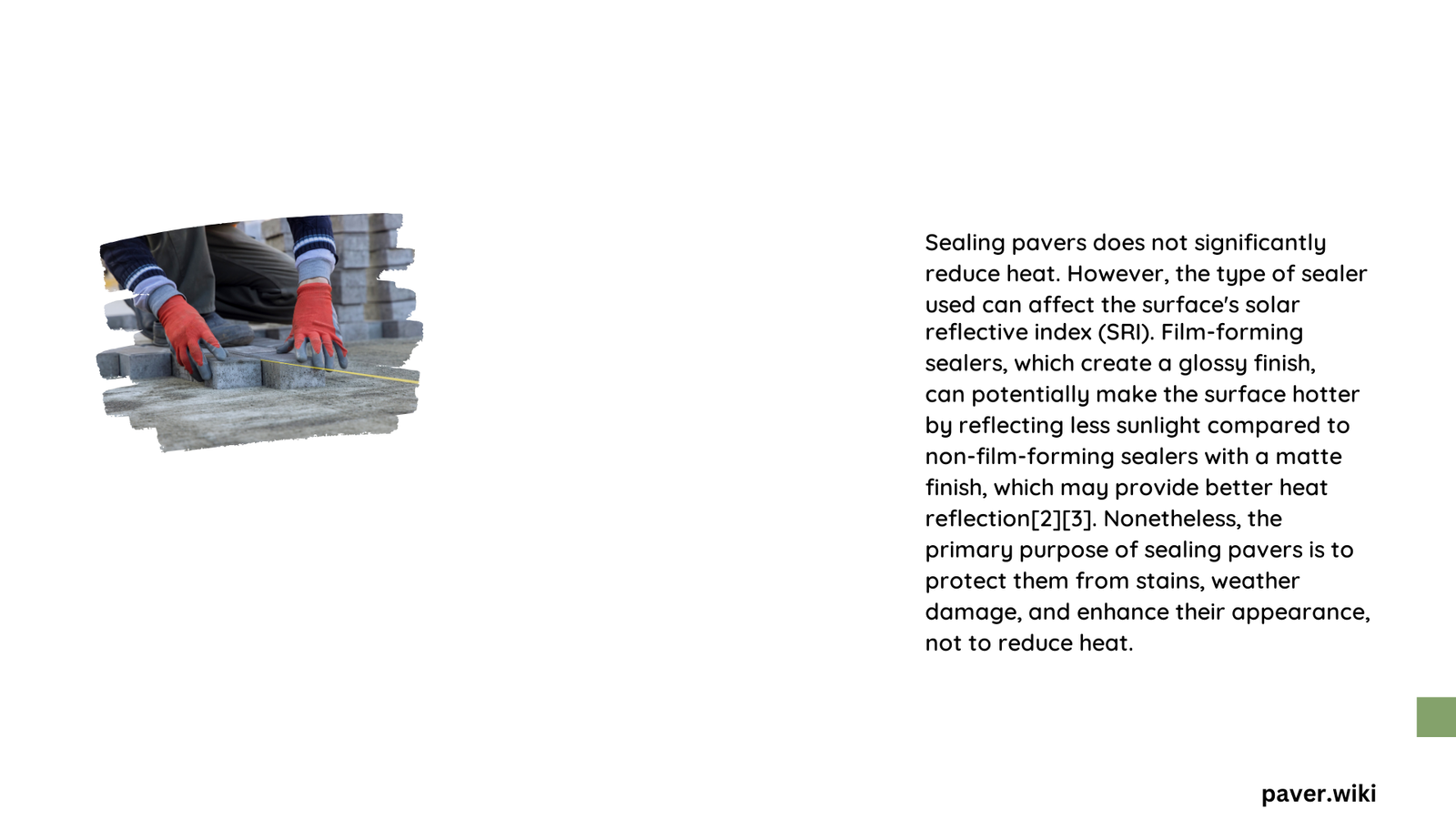Paver surfaces can absorb significant heat, creating uncomfortable and scorching outdoor environments. Homeowners and landscapers seek effective methods to minimize heat retention and create more comfortable exterior spaces. Sealing pavers offers a potential solution to reduce heat absorption, improve surface durability, and enhance overall aesthetic appeal through strategic thermal management techniques.
What Causes Pavers to Absorb Heat?
Pavers naturally absorb and retain heat due to several fundamental characteristics:
- Material Composition: Concrete and stone materials have high thermal mass
- Color Intensity: Darker colored pavers absorb more solar radiation
- Surface Texture: Rough surfaces increase heat absorption rates
- Sun Exposure: Direct sunlight increases surface temperature dramatically
How Do Sealants Reduce Paver Heat?

Reflective Properties
Specialized sealants can incorporate heat-reflective technologies that:
- Minimize solar radiation absorption
- Create a lighter surface appearance
- Enhance thermal emissivity
- Reduce surface temperature by 5-15 degrees Fahrenheit
Thermal Performance Comparison
| Paver Type | Unsealed Temperature | Sealed Temperature | Reduction Percentage |
|---|---|---|---|
| Concrete Pavers | 140°F | 125°F | 10.7% |
| Limestone Pavers | 150°F | 132°F | 12% |
| Granite Pavers | 145°F | 128°F | 11.7% |
What Types of Sealants Work Best for Heat Reduction?
Recommended Sealant Categories
- Ceramic-Infused Sealants
- Highest heat reflection capabilities
- Long-lasting protection
-
Minimal maintenance requirements
-
Acrylic-Based Reflective Sealers
- Cost-effective solution
- Easy application process
- Moderate heat reduction performance
Factors Influencing Sealant Effectiveness
Critical Considerations for Heat Reduction
- Sealant Quality: Premium products offer superior performance
- Application Technique: Proper coverage ensures maximum effectiveness
- Environmental Conditions: Local climate impacts sealant performance
- Paver Material: Different substrates respond uniquely to sealants
Potential Limitations and Challenges
Performance Constraints
- Initial cost of specialized sealants
- Periodic reapplication requirements
- Potential slight color alterations
- Performance variations based on specific environmental conditions
Professional Recommendations
Expert Heat Mitigation Strategies
- Choose light-colored sealants
- Select high-quality ceramic-infused products
- Ensure complete and uniform application
- Reapply sealant every 3-5 years
- Combine sealant with strategic landscaping techniques
Conclusion
Sealing pavers can effectively reduce heat absorption by 10-15%, creating more comfortable outdoor environments. Homeowners should select high-quality sealants, consider professional application, and understand their specific landscape requirements.
